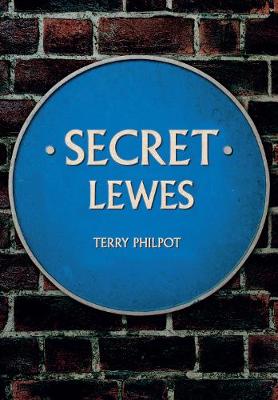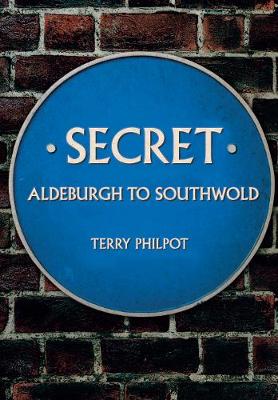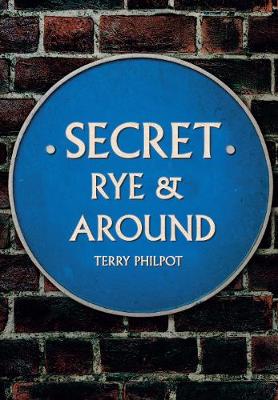Secret
3 total works
Lewes appears to be a tranquil and attractive place but its alleyways and buildings conceal many stories. The town's origins can be traced back to prehistory and the Romans, Anglo-Saxons and Normans have all left their mark.
Author Terry Philpot takes the reader on a fascinating journey through streets that have been walked by artists like Eric Gill and writers from John Evelyn to Virginia Woolf, as well as revolutionaries and reformers from Thomas Paine to Eamon de Valera, and some remarkable local people. The annual Bonfire Night, when an effigy of the Pope is burned, is a reminder of a vibrant religious history that includes the Norman foundation of the Priory of St Pancras to the execution of seventeen Protestant martyrs in the sixteenth century. From the decisive battle of the Second Barons' War, England's 'unknown' civil war of the thirteenth century, to its prison, which held Finnish soldiers captured during the Crimean War 600 years later, English history echoes in Lewes. But it is also a place where eccentrics have had a place, inventors and pioneers have thrived, and entrepreneurs, whose names are now known in today's fashionable shopping places, have flourished.
Donminated by castle and prison and once a major port, Lewes' past, sometimes violent, sometimes inventive, and sometimes creative but always engrossing, is ever present all around you.
Author Terry Philpot takes the reader on a fascinating journey through streets that have been walked by artists like Eric Gill and writers from John Evelyn to Virginia Woolf, as well as revolutionaries and reformers from Thomas Paine to Eamon de Valera, and some remarkable local people. The annual Bonfire Night, when an effigy of the Pope is burned, is a reminder of a vibrant religious history that includes the Norman foundation of the Priory of St Pancras to the execution of seventeen Protestant martyrs in the sixteenth century. From the decisive battle of the Second Barons' War, England's 'unknown' civil war of the thirteenth century, to its prison, which held Finnish soldiers captured during the Crimean War 600 years later, English history echoes in Lewes. But it is also a place where eccentrics have had a place, inventors and pioneers have thrived, and entrepreneurs, whose names are now known in today's fashionable shopping places, have flourished.
Donminated by castle and prison and once a major port, Lewes' past, sometimes violent, sometimes inventive, and sometimes creative but always engrossing, is ever present all around you.
Aldeburgh and Southwold are now very much delightful, fashionable coastal towns, set amid Suffolk’s flat farming country, but in the eighteenth century the poet George Crabbe, a native and local clergyman, characterised the poverty wrought by Suffolk’s ruined agricultural economy in his poem ‘The Village’. Today’s residents and visitors walk not only in the steps of Crabbe but also in those ranging from the novelist Thomas Hardy to the explorer and Arabist C. M. Doughty. The Tudor and Jacobean holiday village of Thorpeness, dating from the 1920s, contrasts with the all-but-vanished village of Dunwich, with nine parish churches covered by the sea. Francis Drake’s Golden Hindwas built in Aldeburgh, and the Battle of Sole Bay took place off Southwold. Aldeburgh was also a place where women’s entry into medicine and female suffrage took significant steps. At Blythburgh is the ‘cathedral of the marshes’; at Wenhaston a medieval doom painting; while at Framlingham are the tombs of the Howard family, which include that of an illegitimate son of Henry VIII.
The picturesque corridor from Aldeburgh to Southwold disguises a significant and volatile history that ebbed and flowed like the sea that has shaped it. Fully illustrated, this book delves beneath the surface to discover the area’s lesser-known tales.
The picturesque corridor from Aldeburgh to Southwold disguises a significant and volatile history that ebbed and flowed like the sea that has shaped it. Fully illustrated, this book delves beneath the surface to discover the area’s lesser-known tales.
Rye and Winchelsea’s unhurried appearance and ancient buildings disguise a history that ranges from Danish and French invaders to the notorious Hawkhurst gang of smugglers. E. F. Benson, creator of Mapp and Lucia, was mayor in places with residents as notable as Ellen Terry and Spike Milligan. And who was the painter who was also a Tory MP and the poet who was an expert on golf? Radclyffe Hall lived in Rye with her lover Lady Una Troubridge and came to call for the removal of their Catholic priest. John Wesley preached in Rye and Winchelsea and the Huguenots fled to both – their mark can be seen today. Few places are better known than Lamb House, but who knows much about it other than Henry James lived there?
In Secret Rye & Around author Terry Philpot takes the reader on a wide-ranging journey through these ‘antient’ towns, around their streets and across country, revealing the lesser-known facts and characters from the town and its surroundings.
In Secret Rye & Around author Terry Philpot takes the reader on a wide-ranging journey through these ‘antient’ towns, around their streets and across country, revealing the lesser-known facts and characters from the town and its surroundings.


